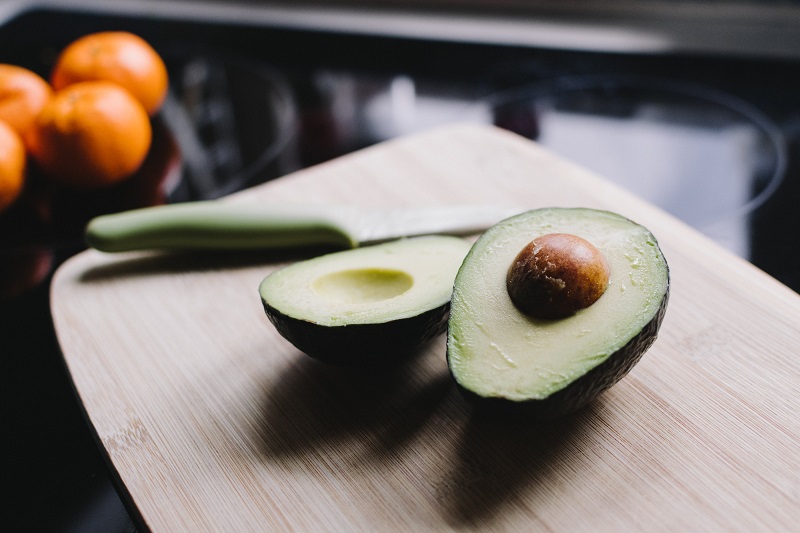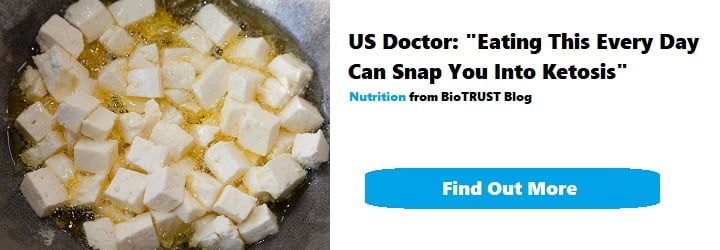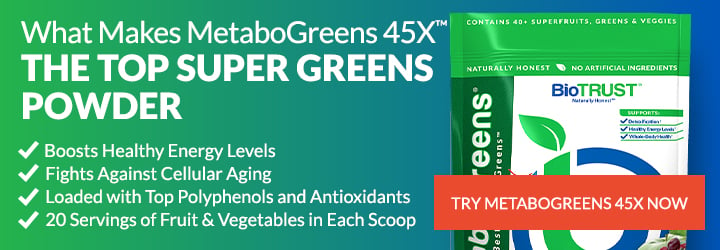What Does an Avocado Do For Your Body?

It may be hard to swallow just how something so delicious and decadent tasting can also be so healthy and good for you. But you don’t have to take my word for it. Check out the nutrition information for half an avocado (1 serving):
- Calories: 114
- Dietary fiber: 6 g
- Total sugar: 0.2 g
- Potassium: 345 mg
- Sodium: 5.5 mg
- Magnesium: 19.5 mg
- Vitamin A: 43 mg
- Vitamin E: 1.3 mg
- Vitamin K: 14 mg
- Vitamin B6: 0.2 mg
- Monounsaturated fatty acids: 6.7 g
While some would argue that the avocado is a vegetable, according to the California Avocado website, the avocado is botanically considered a berry because of its fleshy pulp and large single seed. Plus, this fruit is the product of a tree.
Can I Grow My Own Avocado?
Growing your own avocado is actually quite simple to do.
- Start with a clean (washed) avocado seed.
- Using three toothpicks, suspend the avocado seed (broad end down) over a water-filled glass ensuring about an inch of the seed is submerged in the water.
- Place your seed in a warm place but out of direct sunlight. Water as needed to make sure the bottom inch stays submerged.
- In about two to six weeks, you’ll start to see the roots and stem sprout. (If you’ve followed this process so far and have not seen roots or a stem sprout in more than six to eight weeks, try another seed.)
- When the stem is 6 to 7 inches long, cut it back to about 3 inches.
- When the roots are thick and the stem has leaves again, plant it in a rich humus soil in a 10½-inch-diameter pot, leaving the seed half exposed.
- Water it regularly, keeping the soil moist but not saturated and watering when the top inch dries out. Occasionally give it a deep soak.
- Now that your plant is growing, move it into sunlight—the more, the better during the winter and filtered during the summer.
If you notice your plant is turning yellow, it’s likely because it’s been overwatered. Give it a few days to dry out.
If the leaves turn brown and fried at the tips, too much salt has accumulated in the soil. Let water run freely into the pot, and drain it for several minutes.
When the stem has reached about 12 inches high, if you cut it back to 6 inches, you’ll encourage the growth of new shoots.
Different Ways to Enjoy an Avocado
Most people are familiar with using avocados to make delicious dips and dressings; however, there are many uses for avocados outside of just guacamole. In recent studies, avocado oil has been touted one of the healthiest cooking oils.
This is a smart choice if you are looking for natural ways to lower your blood pressure or to maintain a healthy blood pressure. The monounsaturated fats found in avocado oil may have a beneficial effect on blood pressure (and hence your heart) when eaten in moderation and when used to replace saturated fat and especially trans fats in your diet. To learn more about the benefits of avocado oil, check out this link.
A simple way to enjoy a healthy dose of avocado is by baking an egg into it. Yep, you heard that right. Just cut it in half, scoop out the seed, and crack an egg in the middle. Bake it in the oven for a quick and easy breakfast. You can also use avocados as a mayonnaise substitute, as a facial moisturizer, or as a foot scrub.
So, What Does an Avocado Do For Your Body?
• Heart Health. Avocados contain the plant chemical beta-sitosterol, which has been shown to help support healthy cholesterol levels. Avocados are also packed with monounsaturated fat. According to the American Heart Association, eating monounsaturated fats in moderation, especially in place of saturated and trans fat, can help reduce bad (LDL) cholesterol levels.
• Healthy Eyes. The carotenoids lutein and zeaxanthin are also found in avocados. These nutrients help keep the eyes healthy as we age and may even help reduce the risk of macular degeneration, which is the leading cause of vision loss as we get older.
• Growth and Development. Avocados provide 3.5 grams of unsaturated fat per ounce (that’s about 1/5th of an avocado). Studies have shown that unsaturated fat is important for proper growth and development of the central nervous system and the brain of youngsters.
• Blood Pressure. Avocados are free of sodium and are recommended while on the DASH Diet, which is often the prescribed diet to help lower blood pressure. Avocados also contain potassium, which may support healthy blood pressure. When avocados are eaten instead of other fats (such as butter and mayo), research indicates they may help control blood pressure.
• Weight Loss. Avocados are brimming with healthy fat, which takes the body longer to digest and helps keep you full and satisfied. With over 20 vitamins, minerals, and phytonutrients, avocados are especially nutrient dense which is helpful when you’re reducing calories.
Long story short, avocados are heart-healthy, nutrient-dense with many essential vitamins (e.g., vitamin A, folate, vitamin B6, niacin, pantothenic acid, riboflavin, choline, vitamin C, vitamin E, vitamin K) and minerals (e.g., copper, magnesium, manganese, potassium, zinc), phytochemicals (e.g., lutein, zeaxanthin, phytosterols), and dietary fiber.
According to Dr. Alison Duncan with the Department of Human Health and Nutritional Sciences at the University of Guelph in Canada, “They also contain a high amount of monounsaturated fatty acids (MUFA), which makes them higher in calories than other fruits. But we should care more about the quality of our calories, and avocados have a high nutritional quality. MUFA is a healthy type of fat that has been shown to promote healthy blood lipid profiles. The fat in avocados can also improve our ability to absorb fat-soluble vitamins from avocados and other fruits and vegetables we may be consuming with them. We should care about the quality of fat we consume, and avocados provide us with a high-quality fat that is healthy for us.”
The Biggest Avocado Downfall
The only potential downside I have run across when it comes to the avocado is how to prevent it from turning brown. Outside of eating an entire avocado in one sitting, I have found the best way to prevent browning is to add some acid, like vinegar, lemon, or lime juice, to the avocado and wrap tightly with food wrap. Coach Joel has some great tips and tricks up his sleeve as well, which you may find here.







